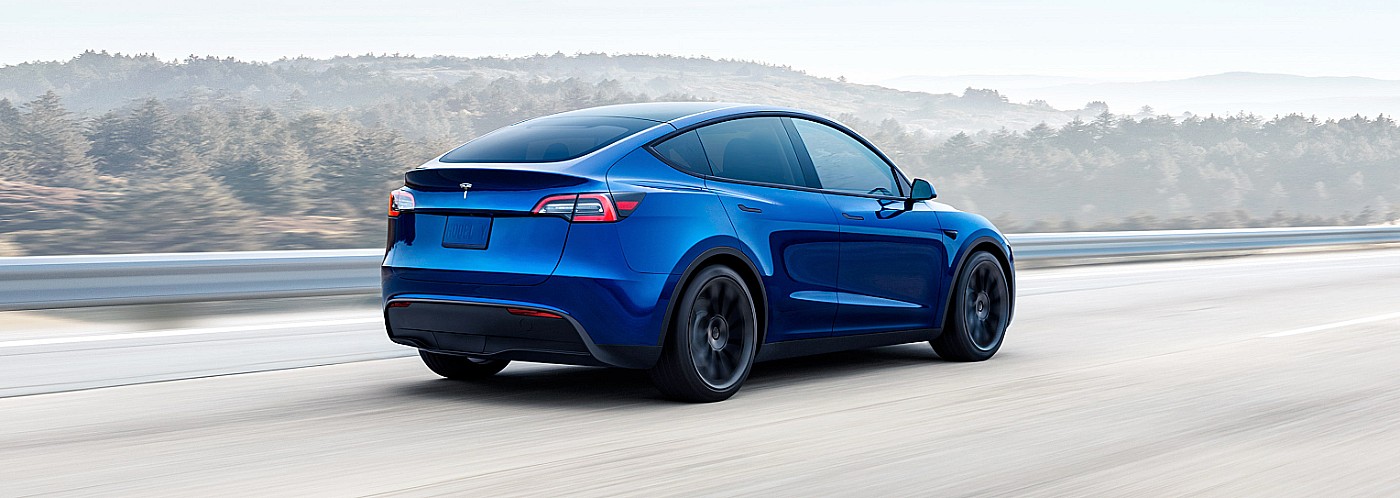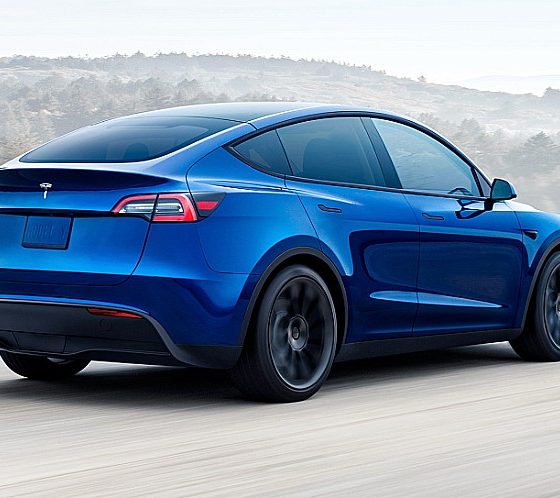Automotive veteran Sandy Munro thinks that Tesla’s build quality issues can be solved by one simple step: caring more about the product.
A recent interview with Alex Guberman of E for Electric revealed that Munro, while a Tesla fan, is concerned about the build quality issues that have been talked about with the company’s most recent vehicles, especially the Model Y.
When talking about the problems the electric automaker was having, Munro certainly didn’t hold back. He used past examples of his career as his evidence that something in Tesla’s production lines doesn’t seem right.
“When I was at Ford, I was brought into plants because the quality was poor,” Munro said. “I was not a very pleasant person to deal with if I didn’t get what I wanted. If it wasn’t perfect, I was not your best friend. I’d move people out. I’d move new people in. Occasionally, I’d fire only executives or supervisors or managers. I’d fire them because it was their job to make sure that everything worked.”
Munro is not entirely confident that the same thing is going on in Fremont.
“I don’t think that happens at Tesla. I don’t think they care enough to really go in and do what they need to do to make the body a perfect product.”
Tesla has battled numerous points of criticism from automotive enthusiasts and some owners of the company’s vehicles. However, many of these issues have been confronted openly by Elon Musk, the CEO of the electric automaker.
In a leaked email from June, Musk told company employees that minimizing the number of errors during production was crucial to the future of Tesla. “It is extremely important for us to ramp Model Y production and minimize rectification needs. I want you to know that it really makes a difference to Tesla right now,” Musk wrote.
Tesla has experienced some supply chain ramp challenges, which is expected with new products. Add the month-and-a-half layoff that the Fremont plant had due to the COVID-19 pandemic, and there are undoubtedly going to be some issues with manufacturing.
Musk highlighted that the Model Y was the top priority for production and manufacturing engineering in the email as well, indicating that the quality control issues would be confronted head-on.
It is important to note that all automakers experience issues within manufacturing from time to time. Not every car that rolls off of a production line is going to be a perfect prototype. Whether it is built by a robot or by a human, mistakes are going to happen. It is the car company’s job to fix the problem by finding solutions, which Tesla has been vocal about doing.
Munro has been openly supportive of Tesla’s mission and products in recent memory. After teardowns of both the Model 3 and Model Y, Munro has encountered several media outlets that have attempted to pull thoughts about Tesla from his mouth.
While most interviews have shown Munro’s support for the electric automaker, Guberman had the unique opportunity to hear some of the more critical thoughts that the auto vet had to say about Tesla’s cars.
Tesla is expanding its production line for the Model Y at the Fremont factory to keep up with increases in demand. The addition of supplementary production lines could help the company keep up with its targets and not rush the manufacturing process, which could also improve the build quality of the electric crossover.
Watch Sandy Munro’s interview with Alex Guberman from E for Electric below.

Elon Musk
Elon Musk and Tesla AI Director share insights after empty driver seat Robotaxi rides
The executives’ unoccupied tests hint at the rapid progress of Tesla’s unsupervised Robotaxi efforts.

Tesla CEO Elon Musk and AI Director Ashok Elluswamy celebrated Christmas Eve by sharing personal experiences with Robotaxi vehicles that had no safety monitor or occupant in the driver’s seat. Musk described the system’s “perfect driving” around Austin, while Elluswamy posted video from the back seat, calling it “an amazing experience.”
The executives’ unoccupied tests hint at the rapid progress of Tesla’s unsupervised Robotaxi efforts.
Elon and Ashok’s firsthand Robotaxi insights
Prior to Musk and the Tesla AI Director’s posts, sightings of unmanned Teslas navigating public roads were widely shared on social media. One such vehicle was spotted in Austin, Texas, which Elon Musk acknowleged by stating that “Testing is underway with no occupants in the car.”
Based on his Christmas Eve post, Musk seemed to have tested an unmanned Tesla himself. “A Tesla with no safety monitor in the car and me sitting in the passenger seat took me all around Austin on Sunday with perfect driving,” Musk wrote in his post.
Elluswamy responded with a 2-minute video showing himself in the rear of an unmanned Tesla. The video featured the vehicle’s empty front seats, as well as its smooth handling through real-world traffic. He captioned his video with the words, “It’s an amazing experience!”
Towards Unsupervised operations
During an xAI Hackathon earlier this month, Elon Musk mentioned that Tesla owed be removing Safety Monitors from its Robotaxis in Austin in just three weeks. “Unsupervised is pretty much solved at this point. So there will be Tesla Robotaxis operating in Austin with no one in them. Not even anyone in the passenger seat in about three weeks,” he said. Musk echoed similar estimates at the 2025 Annual Shareholder Meeting and the Q3 2025 earnings call.
Considering the insights that were posted Musk and Elluswamy, it does appear that Tesla is working hard towards operating its Robotaxis with no safety monitors. This is quite impressive considering that the service was launched just earlier this year.
Elon Musk
Starlink passes 9 million active customers just weeks after hitting 8 million
The milestone highlights the accelerating growth of Starlink, which has now been adding over 20,000 new users per day.

SpaceX’s Starlink satellite internet service has continued its rapid global expansion, surpassing 9 million active customers just weeks after crossing the 8 million mark.
The milestone highlights the accelerating growth of Starlink, which has now been adding over 20,000 new users per day.
9 million customers
In a post on X, SpaceX stated that Starlink now serves over 9 million active users across 155 countries, territories, and markets. The company reached 8 million customers in early November, meaning it added roughly 1 million subscribers in under seven weeks, or about 21,275 new users on average per day.
“Starlink is connecting more than 9M active customers with high-speed internet across 155 countries, territories, and many other markets,” Starlink wrote in a post on its official X account. SpaceX President Gwynne Shotwell also celebrated the milestone on X. “A huge thank you to all of our customers and congrats to the Starlink team for such an incredible product,” she wrote.
That growth rate reflects both rising demand for broadband in underserved regions and Starlink’s expanding satellite constellation, which now includes more than 9,000 low-Earth-orbit satellites designed to deliver high-speed, low-latency internet worldwide.
Starlink’s momentum
Starlink’s momentum has been building up. SpaceX reported 4.6 million Starlink customers in December 2024, followed by 7 million by August 2025, and 8 million customers in November. Independent data also suggests Starlink usage is rising sharply, with Cloudflare reporting that global web traffic from Starlink users more than doubled in 2025, as noted in an Insider report.
Starlink’s momentum is increasingly tied to SpaceX’s broader financial outlook. Elon Musk has said the satellite network is “by far” the company’s largest revenue driver, and reports suggest SpaceX may be positioning itself for an initial public offering as soon as next year, with valuations estimated as high as $1.5 trillion. Musk has also suggested in the past that Starlink could have its own IPO in the future.
News
NVIDIA Director of Robotics: Tesla FSD v14 is the first AI to pass the “Physical Turing Test”
After testing FSD v14, Fan stated that his experience with FSD felt magical at first, but it soon started to feel like a routine.

NVIDIA Director of Robotics Jim Fan has praised Tesla’s Full Self-Driving (Supervised) v14 as the first AI to pass what he described as a “Physical Turing Test.”
After testing FSD v14, Fan stated that his experience with FSD felt magical at first, but it soon started to feel like a routine. And just like smartphones today, removing it now would “actively hurt.”
Jim Fan’s hands-on FSD v14 impressions
Fan, a leading researcher in embodied AI who is currently solving Physical AI at NVIDIA and spearheading the company’s Project GR00T initiative, noted that he actually was late to the Tesla game. He was, however, one of the first to try out FSD v14.
“I was very late to own a Tesla but among the earliest to try out FSD v14. It’s perhaps the first time I experience an AI that passes the Physical Turing Test: after a long day at work, you press a button, lay back, and couldn’t tell if a neural net or a human drove you home,” Fan wrote in a post on X.
Fan added: “Despite knowing exactly how robot learning works, I still find it magical watching the steering wheel turn by itself. First it feels surreal, next it becomes routine. Then, like the smartphone, taking it away actively hurts. This is how humanity gets rewired and glued to god-like technologies.”
The Physical Turing Test
The original Turing Test was conceived by Alan Turing in 1950, and it was aimed at determining if a machine could exhibit behavior that is equivalent to or indistinguishable from a human. By focusing on text-based conversations, the original Turing Test set a high bar for natural language processing and machine learning.
This test has been passed by today’s large language models. However, the capability to converse in a humanlike manner is a completely different challenge from performing real-world problem-solving or physical interactions. Thus, Fan introduced the Physical Turing Test, which challenges AI systems to demonstrate intelligence through physical actions.
Based on Fan’s comments, Tesla has demonstrated these intelligent physical actions with FSD v14. Elon Musk agreed with the NVIDIA executive, stating in a post on X that with FSD v14, “you can sense the sentience maturing.” Musk also praised Tesla AI, calling it the best “real-world AI” today.










